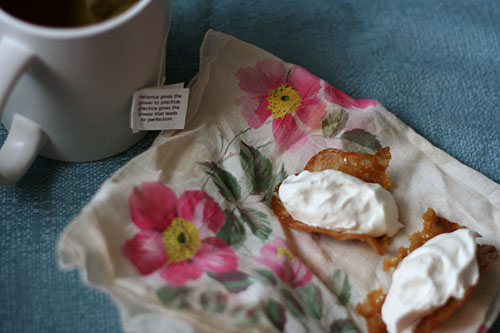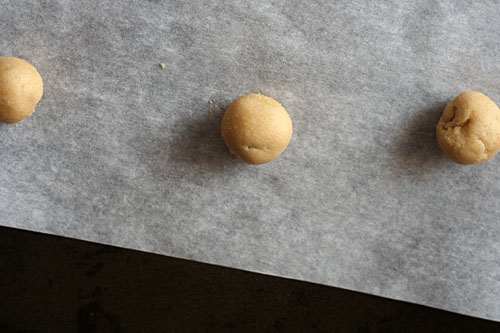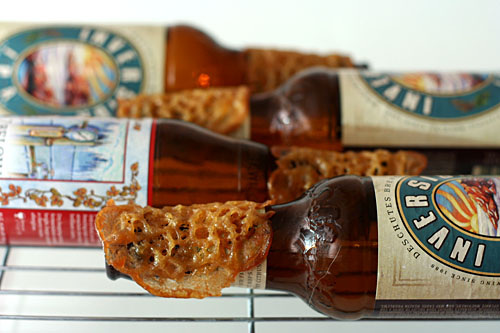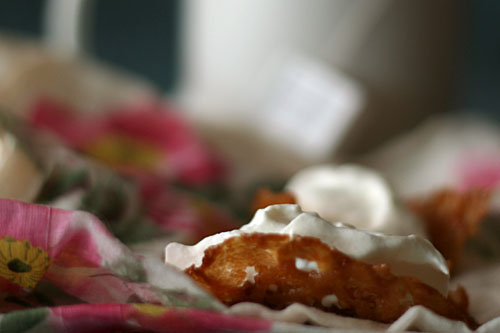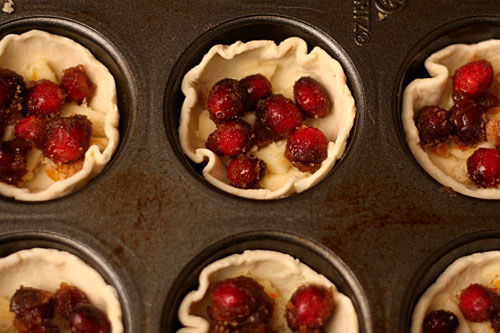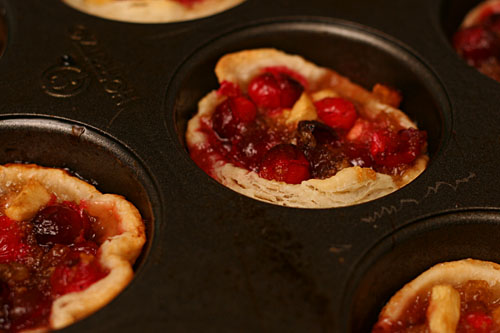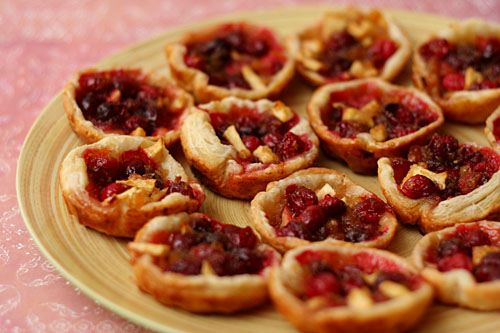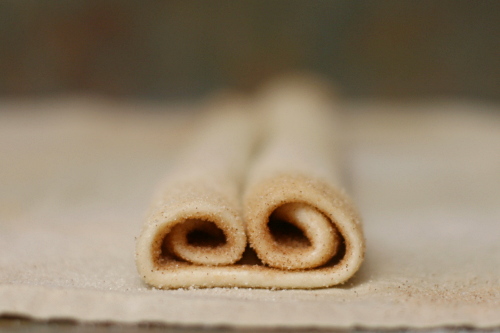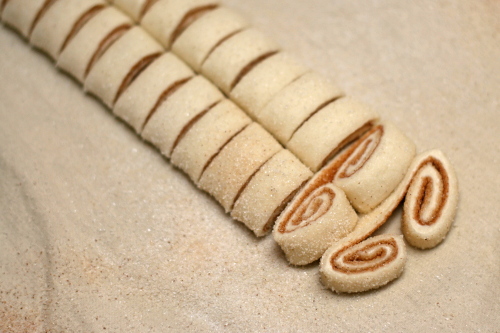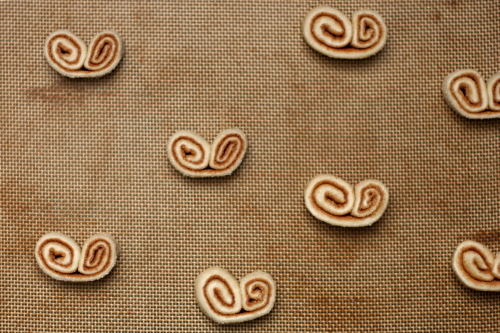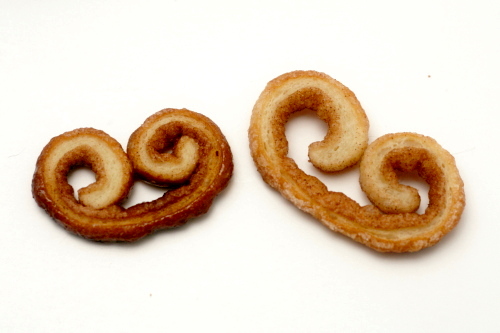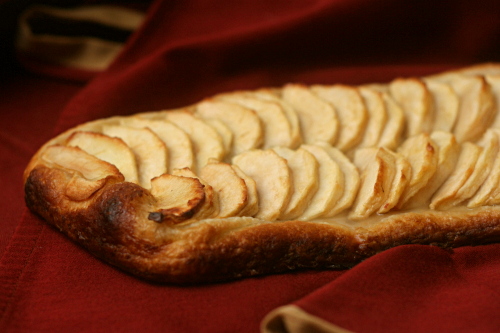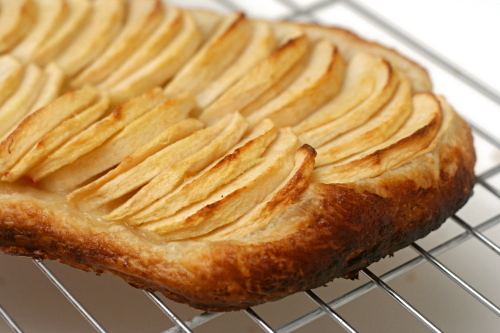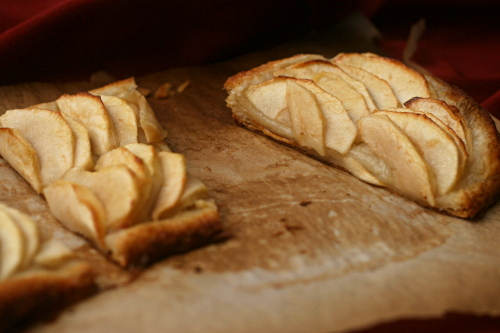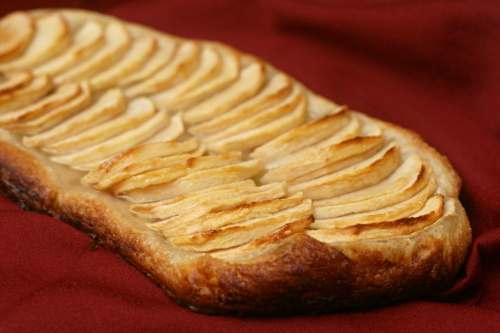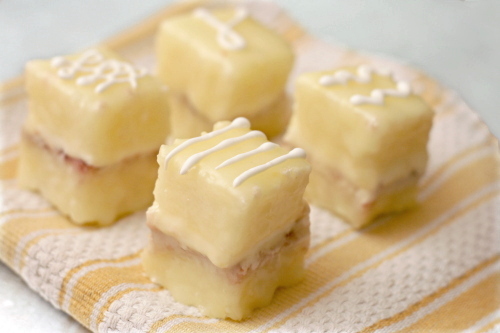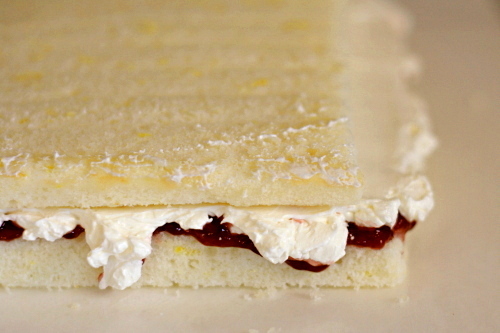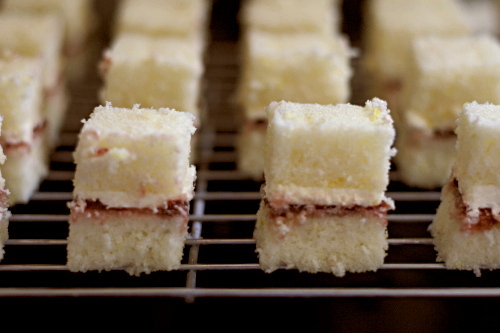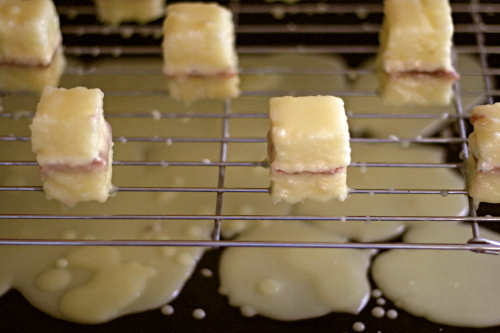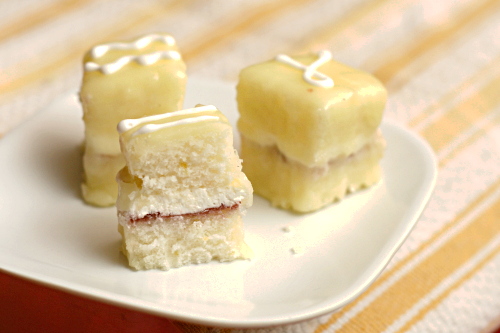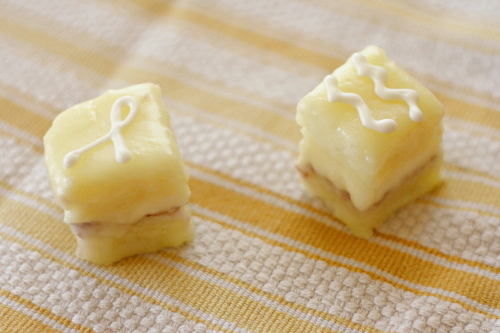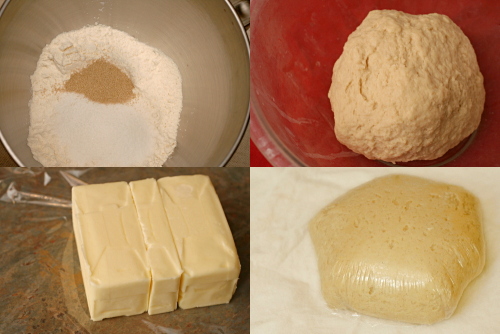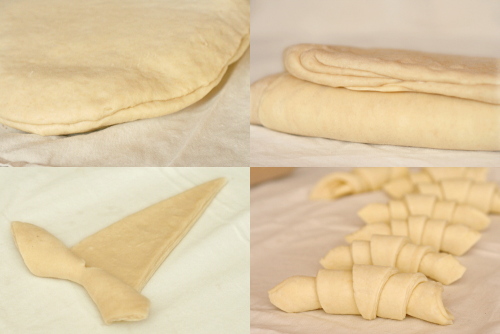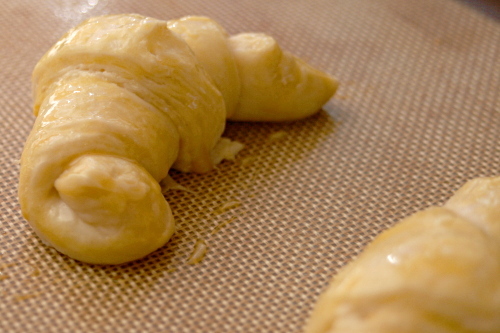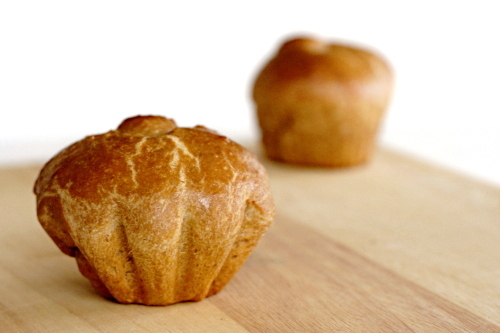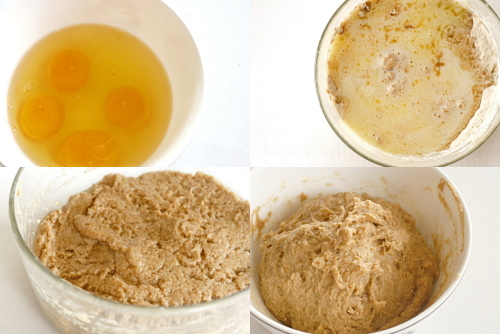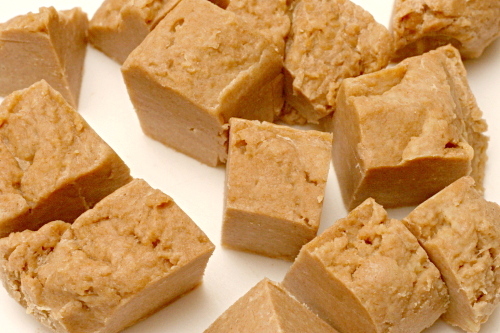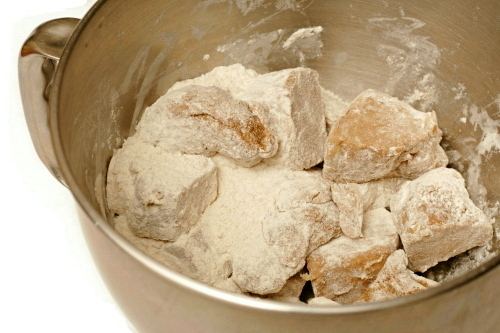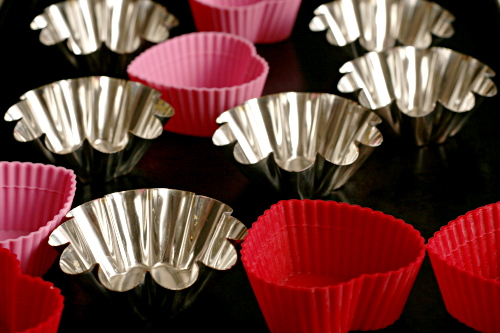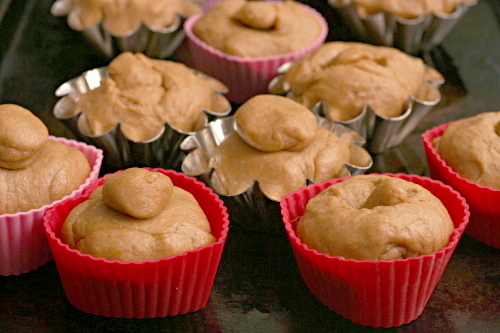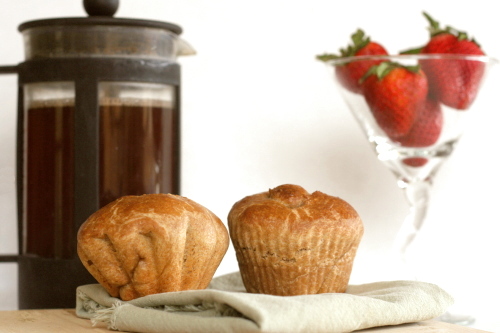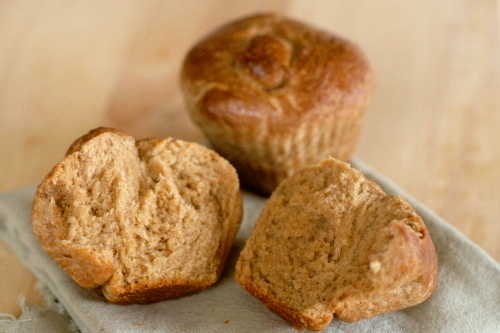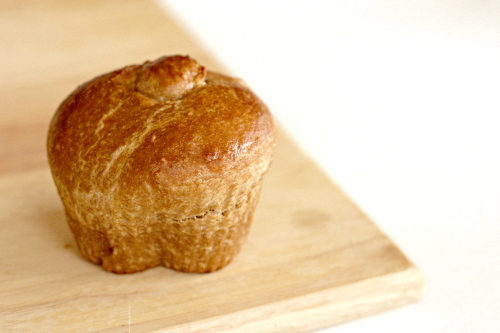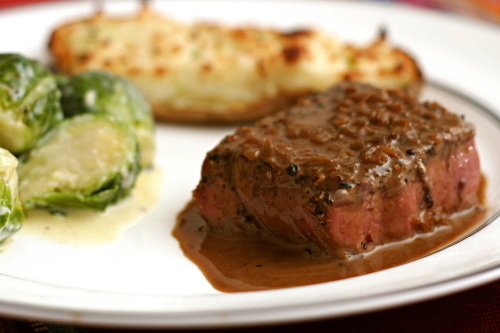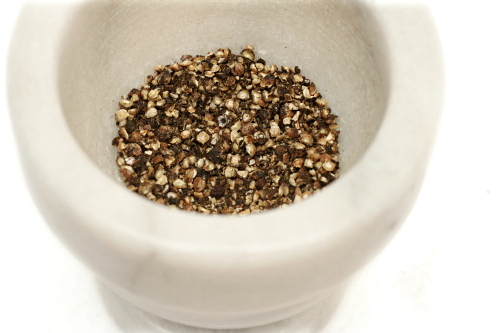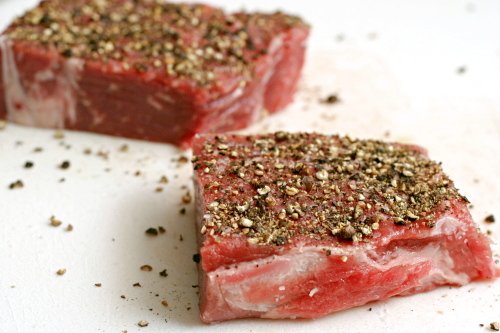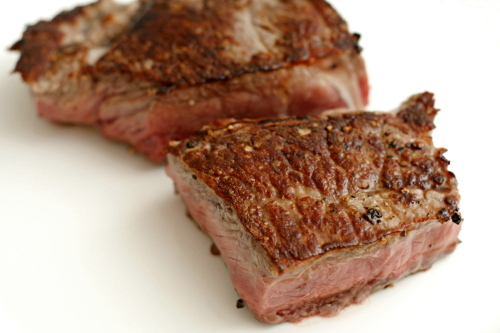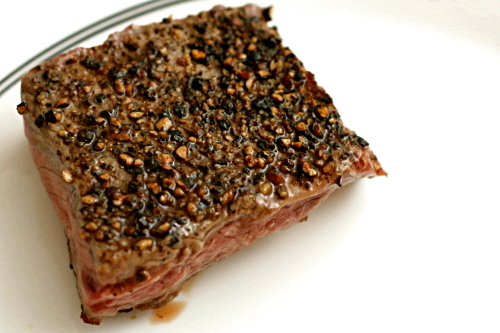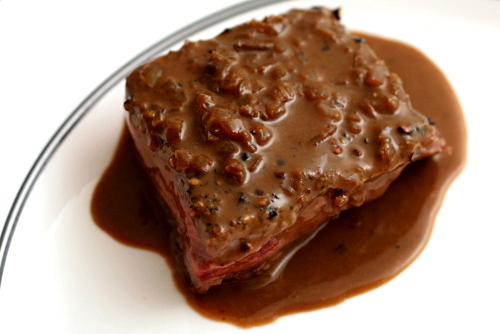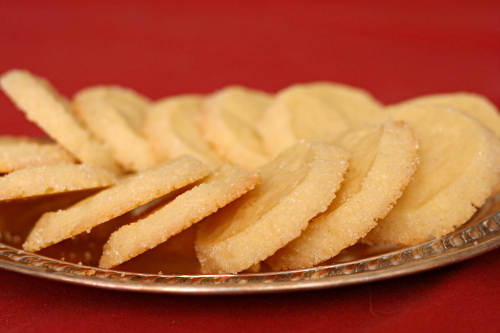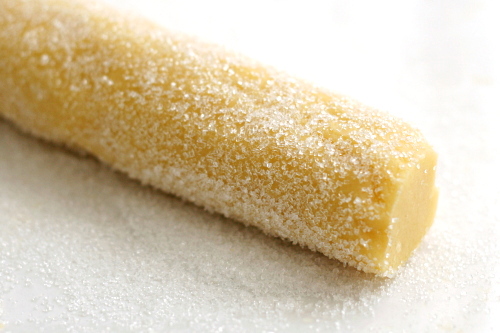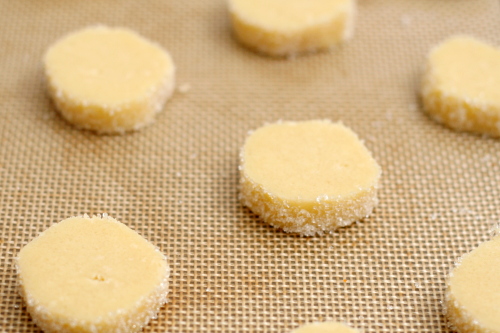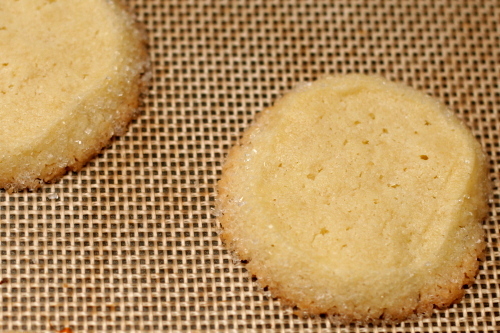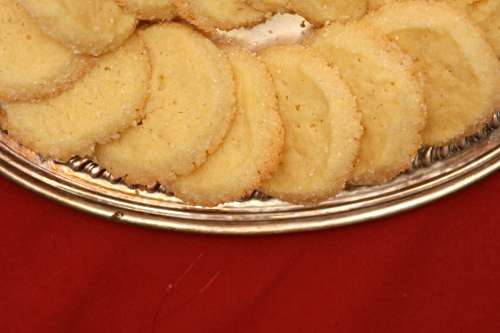Sometimes I’m really on my game, and other times I am just not at all. For example, last month, I made a big turkey dinner feast for me and Dave, just for fun, and it went flawlessly except for the oven getting turned off in the middle of the day and no one noticing until an hour after I put the turkey in. Every recipe impressed me, I got the food to the table while it was still hot, the kitchen was mostly clean before we sat down to eat. That was me on my game.
These tuiles are a simple little recipe. They only have four ingredients. The dough can be made days in advance. They don’t spend long in the oven. It shouldn’t have been complicated.
But I made mistakes at every step. First I added too little flour, which was solved easily enough by softening my chilled dough, working in more flour, and re-chilling. My tuiles baked up well and I only broke one during the transfer from baking pan to cooling rack (or beer bottle, in this case). But they were chewy, and I assumed they were supposed to be crisp, so I put them back in the oven for a few minutes, draped over the rungs of a cooling rack. You, being smarter than me, can probably tell where this went wrong – the tuiles dripped off of the cooling rack in pieces. And they didn’t get any crisper.
From there, it was just breaking the pieces every time I moved them and adding a ridiculous amount of brandy to the whipped cream filling. So. Tuiles. That was interesting.
Hindy chose this recipe for Tuesdays with Dorie, and she has it posted. I added a bit of salt to my dough. Dorie says to bake the tuiles on an unlined baking pan, but mine is really dark and burns things when it’s unlined, so I used parchment paper, which worked great.
One year ago: Rosy Pear and Pistachio Tart
Two years ago: Grandma’s All-Occasion Sugar Cookies
